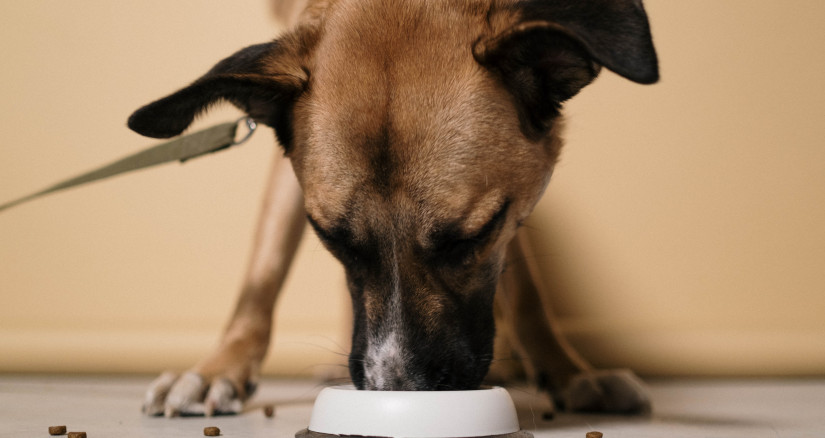
BSM Partner’s Digestibility Trials
Digestibility in pet food is commonly overlooked. However, there are many factors that can affect the digestibility of food in the animal, including improper cooking techniques, underdeveloped starches, ash content, and overall formulation. Digestibility testing can help reassure the pet owner that the food they have selected will provide nutrients that can be absorbed by the animal. Moreover, highly digestible claims should be substantiated through digestibility trials. Currently, there are two approved AAFCO methods: quantitative collection and indicator method. The indicator method is typically utilized in research laboratories or university settings, so for the purpose of this article, it will focus on the quantitative collection method.
Quantitative Collection
The quantitative collection method quantifies the total amount of food consumed and the total amount excreted to understand how much is digestible. Six fully grown animals (cats or dogs) at least one year of age are needed for this trial. Feeding must be standardized, in that every animal will be fed according to body weight in accordance with the NRC feeding guidelines for metabolizable energy (ME) requirements. For the entire digestibility trial, the animals will be fed at least once a day and should have free access to fresh water. Leftover food will be weighed and recorded to understand feed intake. If most of the animals eat minimal amounts or reject the food completely, the trial should be stopped.
First phase: Acclimation
The first part of the study is the acclimation phase. This part of the feeding trial consists of feeding the test diet for at least 5 days. Five days minimum is required to help the dog or cat adjust to the food as well as the opportunity to make any adjustments to the food intake to maintain ideal body weight without compromising digestibility and dog health. After a successful acclimation phase, the second phase, or the collection phase will begin.
Second phase: Collection
During the collection phase, feed adjustments should be done, and dogs and cats will be fed the same amount (per their body weight and caloric needs) for the next five days.
Fecal collections should include all feces, trying to avoid debris and hair. Daily fecal samples are weighed, and aliquots are air-dried quickly to avoid nitrogen and carbon losses that can occur during the fermentation process. It is important to minimize these losses to get the most accurate and representative result. Daily composite samples of the food and fecal samples are sent to a laboratory to be analyzed using an AOAC International-approved analytical method.
Quantitative Collection
|
Days 1-5 |
Acclimation Phase |
Acclimate six cats or dogs to the test diet. Feeding adjustments can be made during this time to maintain ideal body weight for animals. |
|
Day 6-10 |
Collection Phase |
Collect total feces from each dog, for each day. During this phase, food amount cannot be changed. Food and fecal amounts should be recorded including weigh back on leftover food. |
|
All fecal and food samples should be composite for each day and sent to a third-party laboratory for analysis. |
||
The digestibility trial has been completed, now what?
Once results are received from the laboratory, an affidavit needs to be filled out with the supportive data included for the analytical results and sent to the FDA. Sometimes calculating the digestibility, or interpretation of the data can be the most challenging; however, with experienced animal nutritionists, this part can be quite smooth.
With a skilled team of veterinarians, BSM Partners has designed digestibility trials to be conducted with privately-owned dogs. This allows brands who would like to conduct digestibility trials but may not be keen on using purpose-bred dogs an opportunity to do so. Another opportunity offered when using BSM Partners to conduct digestibility of a product is the Veterinary Practice reviews the data and provides a write-up and explanation as to the digestibility percentage and if this is acceptable in the pet food industry. If, for whatever reason, it is not ideal, a discussion can be had as to what adjustments could be made to improve the digestibility of the formula. This service offered by BSM Partners provides meaningful data to substantiate claims regarding product digestibility.
As more pet parents and consumers are aware of the importance of the digestibility of their pets’ food, being able to provide pet parents with data substantiated by trials can increase consumer perception of a brand and provide more confidence to pet parents when selecting an appropriate brand for their pet.
Follow us on LinkedIn for the latest updates on all things happening here at BSM Partners.
About the Author
Dr. Stephanie Clark is a board-certified companion animal nutritionist, veterinary nurse and nutrition specialist, a pet owner, and a mother who had a baby during the formula shortage. She has spent the past almost two decades dedicating her career to the welfare of pets, livestock, and wildlife. She currently provides nutritional consultations for veterinary clinics and works in the pet food industry.
This content is the property of BSM Partners. Reproduction or retransmission or repurposing of any portion of this content is expressly prohibited without the approval of BSM Partners and is governed by the terms and conditions explained here.